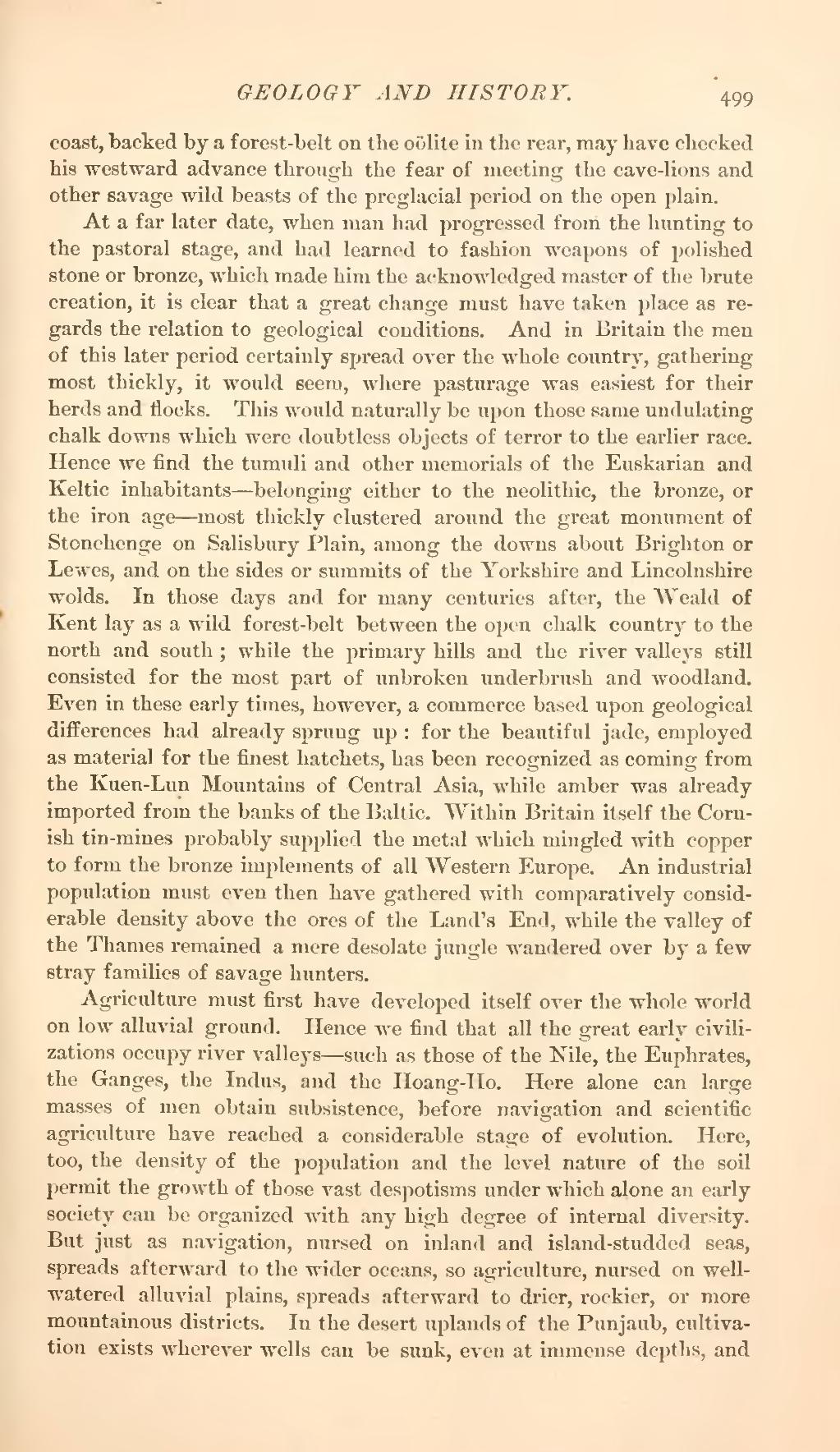coast, backed by a forest-belt on the oölite in the rear, may have checked his westward advance through the fear of meeting the cave-lions and other savage wild beasts of the preglacial period on the open plain.
At a far later date, when man had progressed from the hunting to the pastoral stage, and had learned to fashion weapons of polished stone or bronze, which made him the acknowledged master of the brute creation, it is clear that a great change must have taken place as regards the relation to geological conditions. And in Britain the men of this later period certainly spread over the whole country, gathering most thickly, it would seem, where pasturage was easiest for their herds and flocks. This would naturally be upon those same undulating chalk downs which were doubtless objects of terror to the earlier race. Hence we find the tumuli and other memorials of the Euskarian and Keltic inhabitants—belonging either to the neolithic, the bronze, or the iron age—most thickly clustered around the great monument of Stonehenge on Salisbury Plain, among the downs about Brighton or Lewes, and on the sides or summits of the Yorkshire and Lincolnshire wolds. In those days and for many centuries after, the Weald of Kent lay as a wild forest-belt between the open chalk country to the north and south; while the primary hills and the river valleys still consisted for the most part of unbroken underbrush and woodland. Even in these early times, however, a commerce based upon geological differences had already sprung up: for the beautiful jade, employed as material for the finest hatchets, has been recognized as coming from the Kuen-Lun Mountains of Central Asia, while amber was already imported from the banks of the Baltic. Within Britain itself the Cornish tin-mines probably supplied the metal which mingled with copper to form the bronze implements of all Western Europe. An industrial population must even then have gathered with comparatively considerable density above the ores of the Land's End, while the valley of the Thames remained a mere desolate jungle wandered over by a few stray families of savage hunters.
Agriculture must first have developed itself over the whole world on low alluvial ground. Hence we find that all the great early civilizations occupy river valleys—such as those of the Nile, the Euphrates, the Ganges, the Indus, and the Hoang-Ho. Here alone can large masses of men obtain subsistence, before navigation and scientific agriculture have reached a considerable stage of evolution. Here, too, the density of the population and the level nature of the soil permit the growth of those vast despotisms under which alone an early society can be organized with any high degree of internal diversity. But just as navigation, nursed on inland and island-studded seas, spreads afterward to the wider oceans, so agriculture, nursed on well watered alluvial plains, spreads afterward to drier, rockier, or more mountainous districts. In the desert uplands of the Punjaub, cultivation exists wherever wells can be sunk, even at immense depths, and
